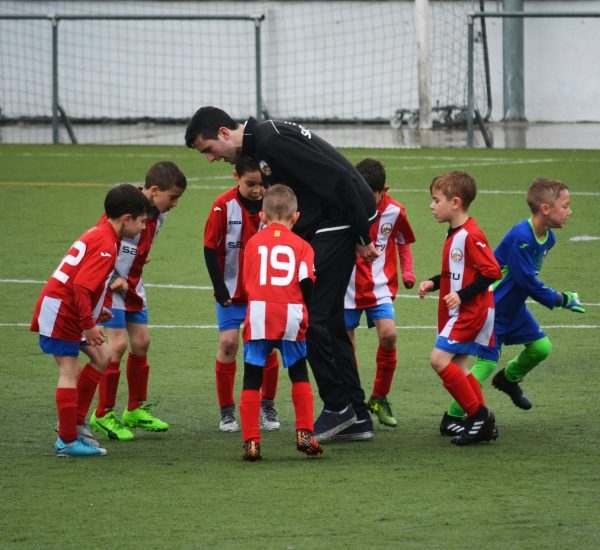Throw-ins play a vital role in soccer, offering a strategic opportunity to regain possession, launch attacking plays, or relieve defensive pressure. While the basic rules of a throw-in are widely known, various nuances and techniques can significantly enhance a player’s effectiveness in executing this skill.
In this comprehensive guide, we will delve deeper into the art of the throw-in, exploring additional details and insights to help you become a master of this fundamental aspect of the game.
- The Basics: A throw-in occurs when the ball fully crosses the touchline, either on the ground or in the air. A player takes it from the team opposite to the one that touched the ball last before it went out of play. The thrower must have both feet on or behind the touchline and use both hands to deliver the ball.
- Body Positioning: While the rules state that the thrower’s feet must be on or behind the touchline, players can gain an advantage by adopting an optimal body position. Positioning the leading foot slightly before the touchline allows for a longer throwing motion and generates more power.
- Technique and Power: A proper approach is crucial to maximizing the distance and accuracy of a throw-in. Start by gripping the ball firmly and placing the fingertips along the seams for better control. As you release the ball, extend your arms forward, creating a whipping motion. Utilize the momentum generated by your body rotation to add power to the throw, enabling the ball to reach greater distances.
- Feet Placement: In addition to the thrower’s body positioning, the placement of the feet also impacts the throw-in’s effectiveness. Keep your feet shoulder-width apart, with the non-throwing foot slightly behind the throwing foot for stability. This stance helps in generating power while maintaining balance during the throwing motion.
- Different Types of Throw-ins: While the traditional two-handed throw-in is commonly used, alternative techniques can provide strategic advantages. The long throw-in, often utilized near the opponent’s penalty area, involves launching the ball with a single hand and an extended arm. The flip throw-in, where the player performs a forward flip while releasing the ball, allows for additional power and distance.
- Tactical Considerations: Throw-ins can be used strategically to gain an advantage on the field. Quick throw-ins catch opponents off-guard and maintain the tempo of an attacking move. Throwing the ball into open space away from congested areas can create opportunities for teammates to make runs and exploit defensive weaknesses.
- Positioning and Awareness: Teammates should position themselves effectively during a throw-in to optimize the possibilities for successful plays. Players can create passing options by making diagonal runs, offering short or long options for the thrower. Awareness of the field and positioning can lead to quick combinations and fluid ball movement after the throw-in.
- Throwing Accuracy: Precision is essential to ensure the ball reaches its intended target. Practice throwing accurately by targeting specific field areas during training sessions. Develop the ability to consistently hit your desired mark to increase your team’s chances of retaining possession and initiating attacking plays.
- Timing and Variation: Varying the timing and delivery of throw-ins can add unpredictability to your team’s game. Delaying the throw-in or using a quick release can catch opponents off-guard, creating opportunities for your team. Additionally, experimenting with different throwing techniques, such as spin or lofted throws, can add diversity and surprise to your play.
- Defensive Considerations: Defensively, players should be alert during throw-ins and position themselves strategically to prevent opposing players from gaining an advantage. Marking opponents tightly and anticipating potential receiving areas can help intercept or disrupt the opponent’s attacking intentions.
- Mental Preparation: Lastly, mental preparation is often overlooked but essential for executing successful throw-ins. Stay focused, visualize your intended target, and remain composed under pressure. Confidence in your abilities will enable you to make quick decisions and execute accurate throw-ins even in high-pressure situations.
Final Thoughts on Throw-In Rules in Soccer
Throw-ins are more than just a means to restart play in soccer. Players can turn throw-ins into valuable opportunities to gain an edge on the field with a deeper understanding of the techniques, positioning, and strategic considerations.
By implementing the comprehensive insights provided in this guide and through dedicated practice, you can elevate your throw-in skills, contributing to your team’s success and enhancing your overall impact on the game.
FAQs on Throw-In Rules in Soccer
Q: Can a player perform a throw-in while standing in the field of play?
A: According to the rules, a throw-in must be taken with both feet on or behind the touchline. The player cannot step into the field of play while taking the throw-in.
Q: What happens if a player fails to take a throw-in properly?
A: If a player fails to properly execute a throw-in, for example, by not using both hands or stepping on the field of play, the opposing team is awarded a throw-in instead.
Q: Can a goal be scored directly from a throw-in?
A: No, a goal cannot be scored directly from a throw-in. The ball must touch another player before a goal can be scored. If the ball enters the opposing team’s goal directly from a throw-in without touching another player, a goal kick is awarded to the defending team.
Q: Can a player retake a throw-in if it was incorrectly taken?
A: No, it cannot be retaken once a throw-in has been taken. If the throw-in was handled incorrectly, the opposing team’s ball possession is awarded.
Q: Are there any restrictions on where the ball must land during a throw-in?
A: The throw-in rules do not specify where the ball must land on the field. As long as the ball fully crosses the touchline, it is considered a legal throw-in.
Q: Can a goalkeeper take a throw-in?
A: Yes, a goalkeeper can take a throw-in. However, if the goalkeeper takes a throw-in and fails to release the ball properly or steps on the field of play, the opposing team is awarded a throw-in.
Q: Is there a limit to how far a throw-in can be thrown?
A: The rules do not specify a maximum distance for a throw-in. However, the player must still comply with the rule of having both feet on or behind the touchline and using both hands to deliver the ball.
Q: Can a player change their decision to take a short throw-in and instead take a long throw-in?
A: Yes, a player can change their decision on whether to take a short or long throw-in. As long as both feet are on or behind the touchline and both hands are used, the player can choose the type of throw-in based on the situation.
Q: Are there any restrictions on the positioning of players during a throw-in?
A: There are no specific restrictions on the positioning of players during a throw-in. However, teammates should be careful not to obstruct opponents or impede their movements while the throw-in is being taken.



